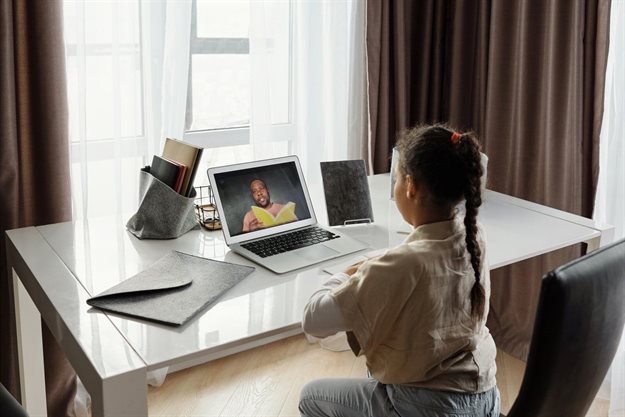






Each form of remote teaching has benefits and challenges but we need to recognise that this time is deeply changing the face of education. We need to understand the impact that each form of teaching has on educators and on students, select the best of these outcomes and refine these in a manner that enables better educational outcomes so that all students of any means benefit.
While it is preferable to have some form of content delivery (even if by, for example, WhatsApp groups and video calls) rather than none at all, the research indicates that where there is no active engagement with an educator, student commitment and achievement of learning outcomes drops by up to 80%. Students suffer greatly when they do not have the opportunity to be taught and to discuss concepts with an educator and with other students. So, if at all possible, schools should aim for forms of remote teaching which enable interaction between educators and students as often as possible.
But even continuous real-time online teaching has challenges. The most common error made by educators is that they attempt to replicate the physical classroom experience online, shoehorning it into the virtual space. This often takes the form of a full lesson ‘lecture’ or a content delivery video of the educator that is far less engaging when delivered online as opposed to in the physical classroom. Instead, what one should aim for is a set of teaching approaches that resonate with the current generation and that make use of the possibilities technology offers. Gamifying classes and assessments, or using more video tools and apps, but which also allows more time for learners to extend themselves outside the virtual classroom.
A synchronous approach to online learning denotes a method in which classes are taught in real-time with direct interaction between students and teachers. This affords learners access to top quality content delivery and the crucial advantage of digital social interaction and collaboration which is critical in processing information. The student is also ‘visible’ to the educator in the virtual classroom which enables the teacher to nurture an all-important relationship with every learner and to foster a sense of engagement and belonging in the virtual classroom. This type of ‘high touch’ approach emphasises human interaction, connection and empathy which balances the ‘high-tech’ delivery of the curriculum content. The opportunity to share well-developed and curated curriculum material with schools which may not have such content developed for online delivery, is clear.
Although the benefits of a mostly real-time approach to online teaching are clear, a common concern is that students spend too long in front of their computers, leading to stress and even digital burnout. This is exacerbated by the fact that teenagers’ social interaction also largely takes place online, especially in the unusual circumstances of the Covid-10 lockdown. Therefore, it is important to significantly reduce ‘lecture’ time and rather to increase time spent on experiential activities like building models and prototyping. Maximising times for learners to use physical tools and materials in their home environment can open up new opportunities for creativity not typically available in on-campus lessons and can also lead to valuable interaction within the family unit. So, while the Somerset College online learning process is different to that on campus, it can be just as rich and indeed differently creative.
The pedagogies of conversation, reflection and self-correction are pivotal to the online learning process. So too is the continuous assessment during the learning process and the opportunities to provide frequent feedback. For example, project-based learning offers a sophisticated and learner-centred approach to formative assessment, and is relatively easy to co-ordinate online. Shared collaborative documents with features such as adding and resolving comments and tracked changes, and tools such as blogging and vlogging, keep students engaged but also allow real-time feedback. Simple and catchy phrases such as, ‘be engaged, be active, be reflective’ help to set and remind students of the expectations of the process. An online setting ensures that the entire learning process is effortlessly recorded for review, assisting students in their understanding of the critical concepts and lends itself to the gamification of formative assessment through easily constructed (and reusable) quizzes and games on a host of apps designed for this purpose. This decreases stress and increases student engagement and enjoyment, with the added benefit of fortifying bonds among students and with teachers.
When facing an extended length of time away from campus, schools must also turn their attention to the utility of summative assessments such as examinations that gauge student progress at the end of a unit of work. It is undeniable that marks should not be the central focus at a time like this, but it is also imperative to continue to monitor student progress, especially in the difficult times we are currently facing. This is even more important when students are at an exit point (such as Grade 7 or matric). Superficially, the reason for this is self-evident, but student assessment and tracking also hold the further benefit of increasing learner motivation, attention and accountability.
Setting examinations which move away from lower order questions and push students firmly into the higher order skills range makes it impossible for them to copy from one another or to Google an answer. When learners are asked to draw from their own life experience, to judge, critique or to create, their answers are necessarily unique and so a greater focus on higher order skills creates space for exploration, extension and growth which might otherwise be missed.
Examinations carried out online do raise concerns around unethical student behaviour, which would render assessment invalid. There are useful computer-based systems which assist with administering examinations at home. Further measures to ensure authenticity can be taken by way of learners signing a declaration of authenticity thereby demonstrating their commitment to ethical behaviour, or by co-opting parents or guardians as invigilators where possible. However, no method of online delivery of assessment can replace the controlled conditions of an invigilated examination. The onus falls onto the student to recognise summative assessments such as examinations as opportunities to prepare, practise and receive authentic and timeous feedback. This is one way in which online learning develops the student’s internal locus of control – which is in itself a valuable life-skill. But an educator must evaluate whether a student’s summative assessment results fall in line with the level of progress shown in previous work. If doubt prevails, the educator must make arrangements for another assessment opportunity. If an in-person, invigilated assessment opportunity is not possible, an oral examination can prove useful.
So, while it is true that there are pitfalls in conducting summative assessments online, the benefits far outweigh the disadvantages.
Online learning is a new frontier for educators and one in which most have no, or very little, formal training. The virtual classroom should not be seen as the understudy to the physical classroom experience but as a different medium offering other, exciting, opportunities. Online learning opens up options for increased voice and choice among students and opportunities to practise discipline and self-control. Upskilling both educators and learners about how to make the best use of this realm, is not an event but a continuous and never-ending process. At Somerset College, we are just at the beginning of that journey. It is a process that requires time, a sense of humour and plenty of patience, but that brings great rewards in student progress. Taken to its full potential, online learning holds the opportunity to democratise learning by exposing all students of any means to the best content and to the most appropriate, modern and engaging way of assessing understanding. This is a moment no educator, no policy maker, no parent and no student should let pass.